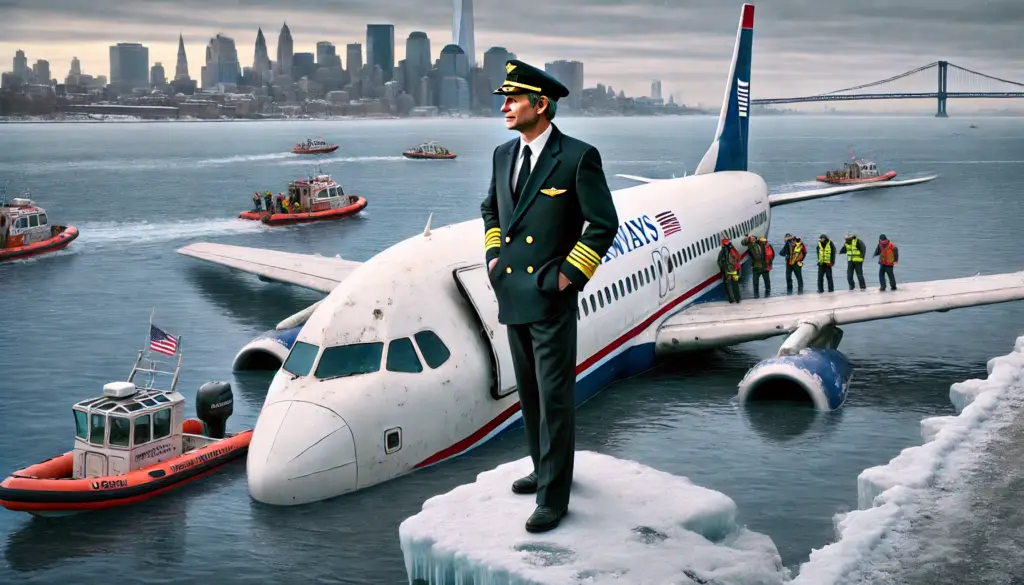The Miracle on the Hudson: Lessons On Leadership

Introduction
Winning in life is not just about personal success or being the best.
It’s about finding the right balance between giving and taking.
This means giving credit to others when they deserve it and taking responsibility when things go wrong. When you show thankfulness, appreciate the help you get from others, and take responsibility without blaming people, life often surprises you with support.
This simple but strong lesson is shown in the incredible story of Captain Chesley “Sully” Sullenberger and the Miracle on the Hudson.
The Miracle on the Hudson: A Story of Leadership and Courage
It was a cold afternoon in January 2009. US Airways Flight 1549 was ready to fly from LaGuardia Airport in New York to Charlotte. There were 155 people on board, including the pilots and crew.
The plane took off smoothly and quickly climbed to about 2,800 feet. Then, something terrible happened. A loud bang filled the air inside the aircraft, followed by another heavy thud.
Some passengers saw flames coming from the engines. Then, everything went quiet.
A flock of large birds, geese, had flown into the engines. Both engines stopped working.
Planes are designed to fly even if one engine fails, but it’s a big problem if both fail. The plane had no power. It was now just gliding, falling slowly from the sky.
The co-pilot had been flying the plane, but as soon as the trouble started, Captain Sully said, “My aeroplane.”
The co-pilot quickly replied, “Your aeroplane,” giving complete control to Captain Sully. These two simple words showed that Captain Sully was taking charge. In moments of danger, true leaders step up.
They don’t waste time blaming others. They take responsibility.
Captain Sully had over 30 years of flying experience. He stayed calm and focused. He spoke to air traffic control to report the emergency. They told him to return to LaGuardia Airport. But Captain Sully knew the plane wouldn’t make it back.
He could see the busy streets of New York below and the Hudson River ahead.
He had only a few seconds to decide.
Captain Sully chose to land the plane on the river. This was a perilous move, but he trusted his skills.
The aircraft glided down and hit the water smoothly. It floated instead of breaking apart. All 155 people on board survived. This event became known as the “Miracle on the Hudson.”

Leadership Lessons: Taking Ownership
Captain Sully’s actions teach us important lessons about leadership. The first lesson is about taking ownership.
When things go wrong, real leaders don’t point fingers. They say, “My aeroplane,” meaning they take control and responsibility.
They focus on solving the problem, not finding someone to blame.
We face problems in our own lives, too. It’s easy to blame others when things don’t go well, but blaming doesn’t fix anything. Taking responsibility helps us stay strong and find solutions.
Like Captain Sully, we may not control what happens to us, but we can control how we react.
The Power of Giving Credit
After the safe landing, Captain Sully was called a hero. Reporters praised him for saving so many lives. But Captain Sully didn’t take all the credit.
Instead, he said, “They did it,” pointing to his co-pilot Jeff Skiles, the three brave flight attendants—Donna, Sheena, and Doreen—and even the rescue teams on the boats.
This shows the second lesson: give credit to others. Great leaders know that success is a team effort.
When we thank and appreciate the people who help us, it makes them feel valued and builds strong relationships. Some people worry that they won’t get recognised if they give credit to others.
But the truth is, the more you appreciate others, the more respect you earn.
Getting the Timing Right
Many people get these lessons mixed up. When something goes wrong, they say, “They did it,” trying to blame others.
And when something goes right, they say, “My aeroplane,” trying to take all the credit. Captain Sully’s story teaches us to do the opposite.
Say, “My aeroplane,” and take responsibility in tough times.
When things go well, say, “They did it,” and give credit to your team.
This simple change makes a big difference. It shows that you are strong and humble at the same time.
Conclusion: The Art of Give and Take
Winning in life isn’t about being the smartest or the best. It’s about knowing how to give and take. Give credit when others help you.
Take responsibility when things go wrong. These small actions build trust, respect, and strong connections with others.
So, when you face a problem, remember to say, “My aeroplane.” And when you succeed, don’t forget to say, “They did it.”
These simple words hold the secret to becoming a better leader and living meaningfully.




